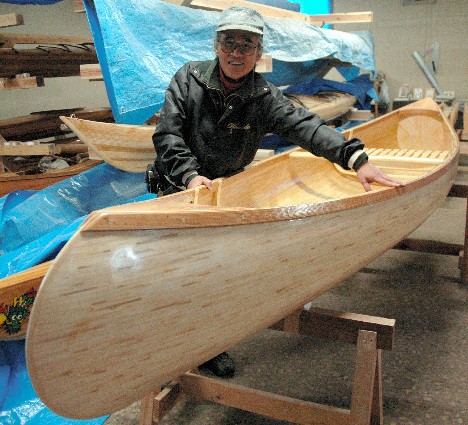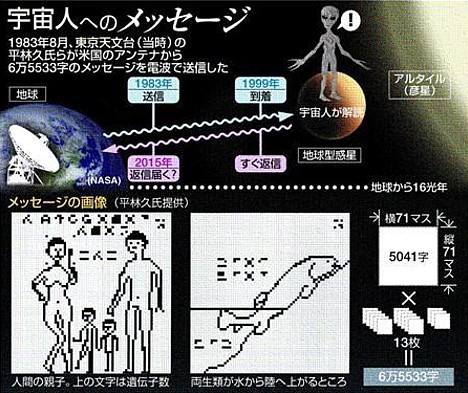
An "e-mail" message from aliens inhabiting the Altair solar system could reach Earth within 7 years, some astronomers suggest. The alien message would come in response to a radio-wave signal sent toward Altair 25 years ago by Japanese astronomer Hisashi Hirabayashi, who suggests we may receive a reply as early as the year 2015 if intelligent aliens received, decoded and responded quickly to the message. Altair is located approximately 16 light-years from Earth.
Hirabayashi, a former researcher at the University of Tokyo Astronomical Observatory (now known as the National Astronomical Observatory of Japan), along with colleague Masaki Morimoto, sent the message via a US radio telescope in 1983 on the Tanabata holiday, a traditional Japanese star festival celebrating the annual meeting of two stars -- Vega (which represents the goddess Orihime) and Altair (which represents the god Hikoboshi) -- in the night sky.
The message, which is believed to have reached Altair in 1999, consisted of 13 binary-encoded images (71 x 71 pixels each) that showed, among other things, the characteristics of our solar system, the location of our planet, the known chemical elements, whole numbers, human characteristics, and the basic structure of DNA. Their message also attempted to explain biological evolution with a depiction of mammals evolving from primeval life forms (see the image above of the fish crawling onto land).
Hirabayashi theorizes that if the aliens are intelligent enough to receive radio-wave signals, they should recognize that the data consists of 13 images and they should be able to send a reply. But Hirabayashi is not holding his breath. "I believe aliens exist, but they are difficult to find," he says. "We haven't even observed any planets around Altair, so it is highly unlikely we will receive a response."
Hirabayashi's original illustrations, which went missing for many years, were recently discovered at the Nishi-Harima Astronomical Observatory, where Morimoto works as an advisor. Strangely, one of the pictures sent to Altair includes the molecular formula for ethanol along with the kanji characters for kanpai (the Japanese toast of "cheers!") and the English word "TOAST."
"I came up with that idea while drinking," Hirabayashi playfully admits. "The aliens probably won't understand that part."
[Source: Sankei]
* * * * *
UPDATE -- According to this graphic, the message to Altair included descriptions of the following:
- Whole numbers, prime numbers, definition of lengths
- Addition, multiplication
- Main chemical elements, atomic structure
- Solar system data (size of sun/planets, distance of planets from sun)
- DNA structure and basic composition
- History of terrestrial biological evolution (primeval life forms, fish, amphibians, anthropoids, etc.)
- Image of human form and face, number of human genes
- World population
- Message transmission frequency
- Chemical formula for ethanol
- Kanji character for kampai (Cheers!), English word "TOAST"


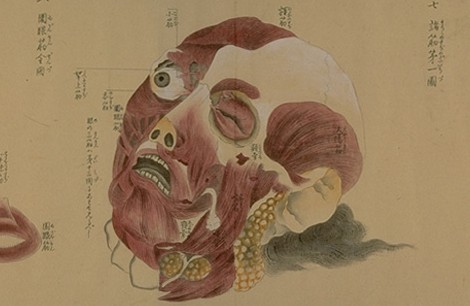
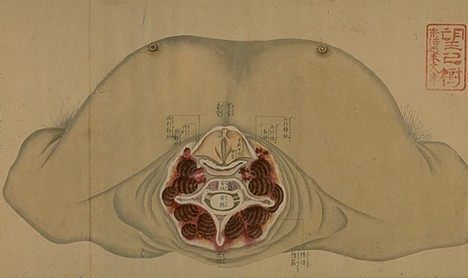

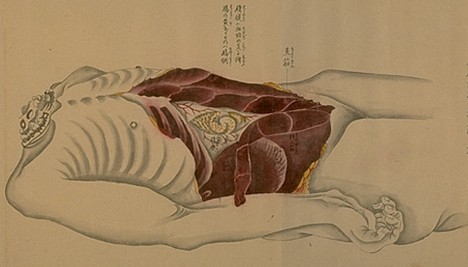
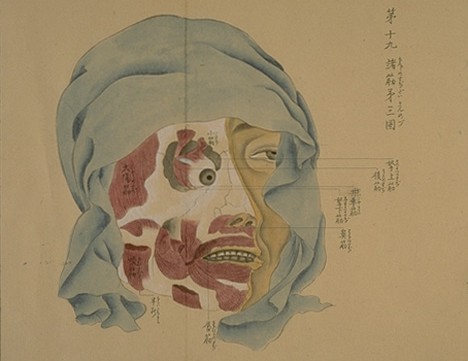
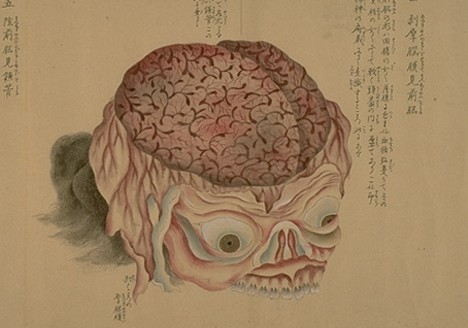


 NTT has begun selling a device that transmits data across the surface of the human body and lets users communicate with electronic devices simply by touching them, the company announced on April 23.
NTT has begun selling a device that transmits data across the surface of the human body and lets users communicate with electronic devices simply by touching them, the company announced on April 23. 
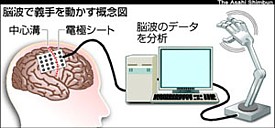 Researchers at Osaka University are stepping up efforts to develop robotic body parts controlled by thought, by placing electrode sheets directly on the surface of the brain. Led by Osaka University Medical School neurosurgery professor Toshiki Yoshimine, the research marks Japan's first foray into invasive (i.e. requiring open-skull surgery) brain-machine interface research on human test subjects. The aim of the research is to develop real-time mind-controlled robotic limbs for the disabled, according to an announcement made at an April 16 symposium in Aichi prefecture.
Researchers at Osaka University are stepping up efforts to develop robotic body parts controlled by thought, by placing electrode sheets directly on the surface of the brain. Led by Osaka University Medical School neurosurgery professor Toshiki Yoshimine, the research marks Japan's first foray into invasive (i.e. requiring open-skull surgery) brain-machine interface research on human test subjects. The aim of the research is to develop real-time mind-controlled robotic limbs for the disabled, according to an announcement made at an April 16 symposium in Aichi prefecture. 
